Years after being a Boy Scout, Tod Mikuriya would go on to become the father of the medical marijuana movement.
Dr. Tod Mikuriya’s lifelong research laid the foundation upon which all medical marijuana legislation is based.
By Rob Buscher, Contributor
[Editor’s note: The following article will appear in two parts, with the final installment to be featured in the June 5, 2020, issue of the Pacific Citizen. Read part 2 here.]
As states and municipalities across the country legalize the use of medical marijuana, cannabis preparations are becoming increasingly popular in the treatment of a wide array of medical issues. Currently, all but four states have some form of cannabis access program for medical use. A growing number of states have even taken the step to legalize marijuana for recreational use, which currently includes Alaska, California, Colorado, Illinois, Maine, Massachusetts, Michigan, Nevada, Oregon, Vermont, Washington and the District of Columbia. Even a decade ago, this was unthinkable.
Predating the widespread acceptance of medical marijuana in this country, one man spent his life and career researching and advocating for the restoration of cannabis in the United States Pharmacopeia — his contributions laid the foundation upon which all medical marijuana legislation is based.
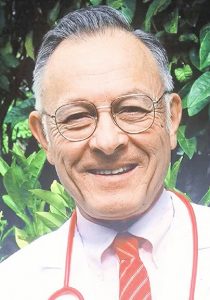
Dr. Tod Mikuriya
To patient advocates and others in the medical cannabis community, his name is familiar, but few in the Japanese American community are likely to know the late Dr. Tod Mikuriya, a Hapa Japanese American psychiatrist, historian, U.S. Army Veteran, Republican and pro-marijuana activist.
Mikuriya’s parents, Tadafumi Mikuriya and Anna Schwenk, were well-known in the Philadelphia region as perhaps the only interracial couple in the town of Fallsington, who began their family in 1933 with Tod’s birth.
Tod Mikuriya’s mother was a German immigrant, and his father was an Issei immigrant from Japan whose family were of Samurai nobility. Compared to the majority of Japanese in the West Coast who were working as farm laborers and fishermen, the elder Mikuriya came to the U.S. under the sponsorship of the famed Wannamaker family, who helped facilitate his entry to the University of Pennsylvania’s engineering program. However, even the association with an esteemed family could not prevent the inevitable racism that would follow the U.S.’s entry into World War II.
In an interview excerpt from the biopic documentary “Dr. Tod,” Mikuriya recalled, “Imagine me at age 7, it was a war on Sunday afternoon. Listening to the news, it was really a shock hearing the account of the bombing of Pearl Harbor and realizing the implications this would have for our family, none of them good, believe me.”
As children, Tod and his younger sister, Mary Jane, experienced a great deal of racism from the local community. The Mikuriya family would find solace through their association with the Quaker community.
“We were fortunate to be living down the street from a Quaker meeting house, and the Quaker community essentially gave us protection from the rest of the really hostile world out there,” Todd recalled in the documentary. “We were not sent to a concentration camp but were kept under surveillance of the FBI, forbidden from traveling more than 50 miles and had to turn in our camera and radio with short band on it.”
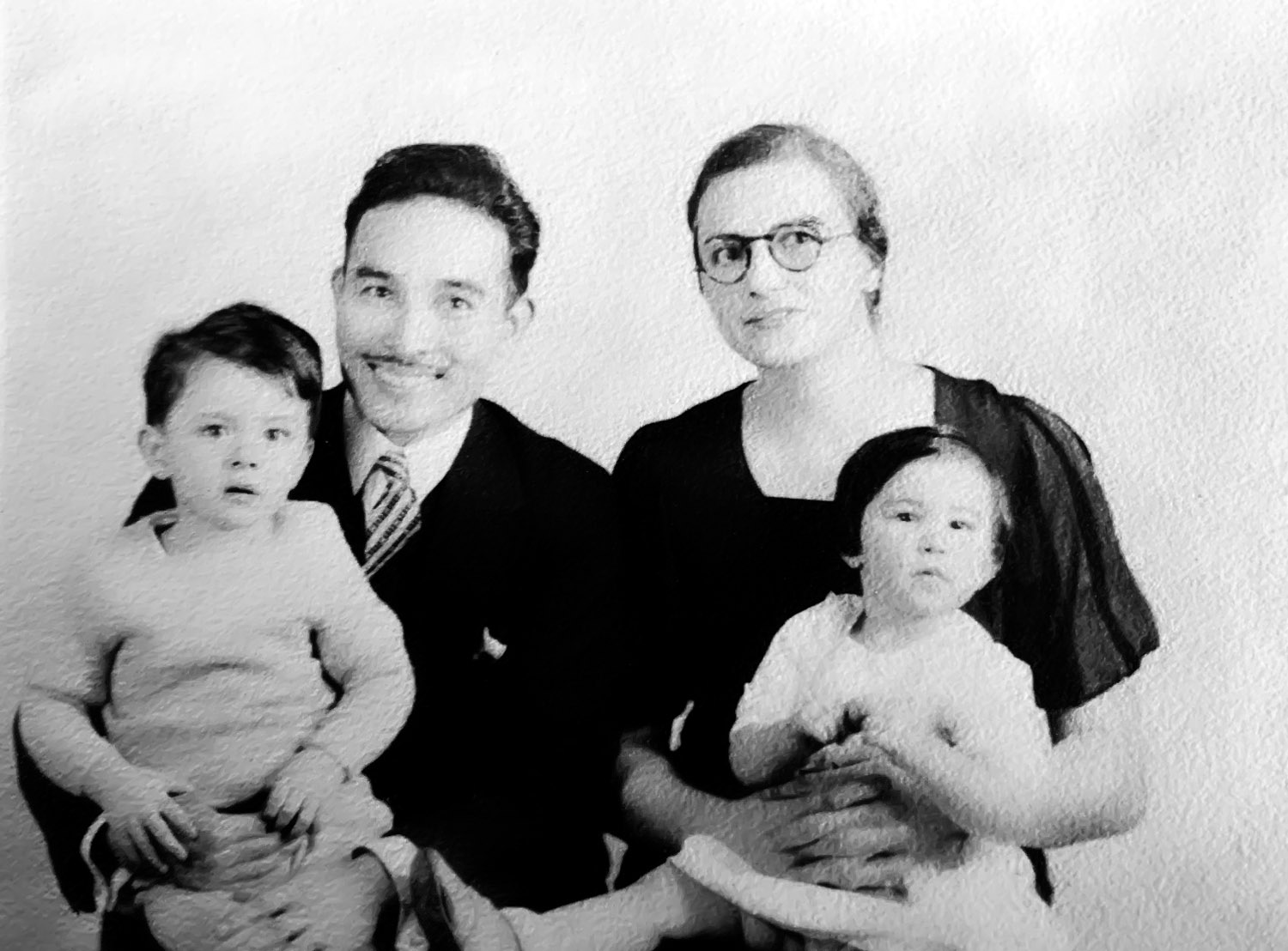
Tod and his sister, Mary Jane, with their parents in 1935. (Photo: Courtesy of the Mikuriya family)
These experiences helped shape Tod’s worldview from an early age, along with encouragement from his parents, who were quite progressive for their era. Tod was never afraid to speak up.
In one childhood incident, Tod was once reprimanded by his Boy Scout troop leader for calling a beach attendant racist for not allowing their group onto the beach because they included an African-American student. When the troop leader told Tod’s parents, they sided with Tod and told him it was the right thing to do.
Mary Jane recalled, “I think these early years of encouragement to speak up for others and speak truth even to power
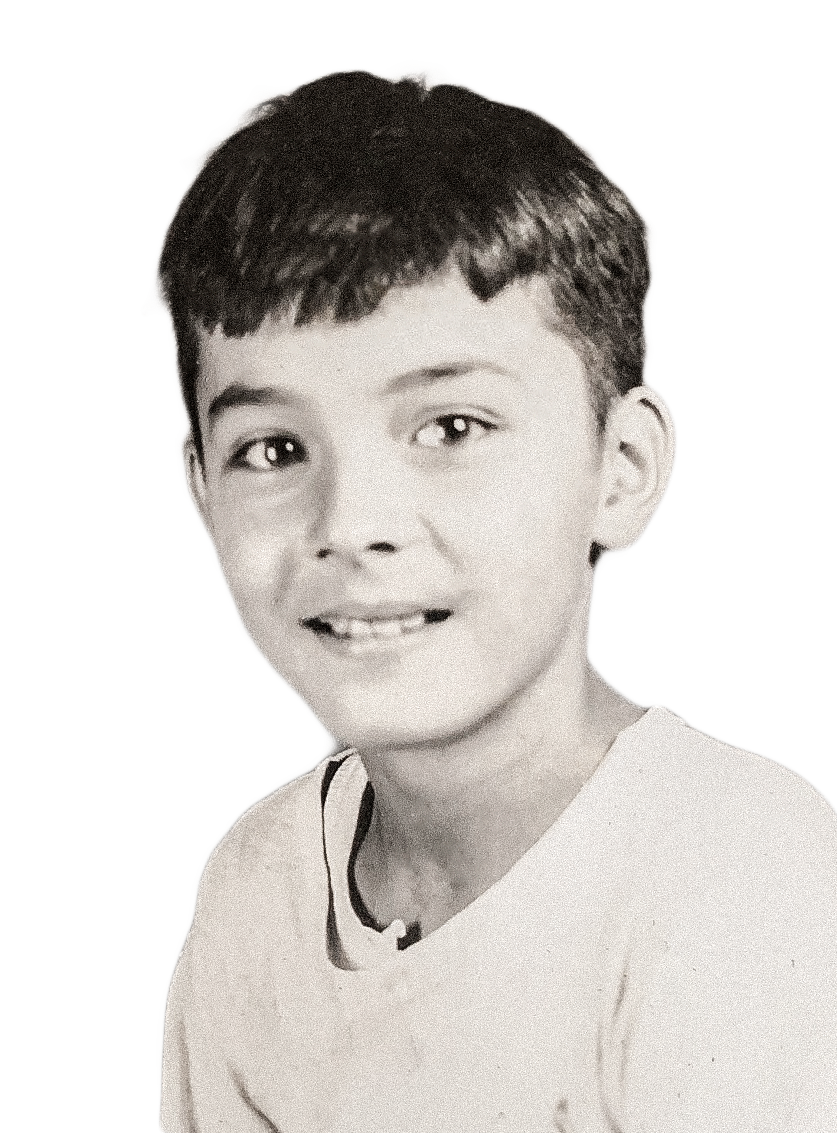
Tod Mikuriya, circa 1944. (Photo: Courtesy of the Mikuriya family)
became a way of life for Tod.”
After completing his elementary education, Tod attended the George School, a Quaker boarding school. He then went on to receive his college degree at Reed College in Oregon and was then drafted into the U.S. Army in 1957, where he served a brief stint as an attendant on the locked psychiatric unit at Brooke Army Hospital in Texas.
It was during this time that Tod developed a deeper interest in the mind, and he decided to apply for admission to Temple University School of Medicine’s Psychiatry program.
He was granted early release from active duty to pursue his medical degree in Philadelphia, and Tod continued his service as an Army reservist at the nearby Germantown Army Reserve Center.
His career would take a sudden and unlikely turn when Tod stumbled across an unassigned chapter on the medical uses of cannabis in his pharmacology textbook.
“The fateful change in my life took place in March 1959 in study of pharmacology my sophomore year,” he recalled. “I was studying Goodman and Gilman second edition, and I came across a chapter on marijuana. This nine-page chapter was not in the course at all, but it happened to be in the textbook; it launched me on this sort of inquiry. That spring, I read everything on marijuana in the medical library and decided that I should try some of this stuff.”
Marijuana is classified as a Schedule 1 drug under federal law, as defined by the Controlled Substances Act of 1970, but the prohibition of cannabis dates back to 1937.
In a 1991 talk show interview, Tod explained, “Marijuana was taken away from availability by the 1937 Marihuana Tax Act, and medicinal cannabis also became unavailable, deleted from the 1941 formulary and pharmacopeia. It was part of this so-called ‘sending the signal’ school of propaganda and disinformation that the police had to maintain in order to continue the fictionalized ‘killer weed’ or part of ‘reefer madness.’ Saying that Cannabis had medical or medicinal utility would have run contrary to their fiction that they needed to maintain in order to continue credibility and not have people question why marijuana was prohibited.”
In reality, cannabis has been used in a variety of traditional medical contexts throughout the world for centuries, as Tod would learn through his extensive research on the subject in the decades to come.
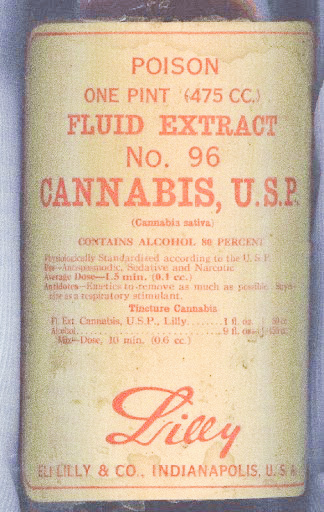
A Lilly Cannabis extract label
Western medicine also incorporated medicinal cannabis into its standard pharmacopeia by the mid-1800s and doctors commonly prescribed it to treat conditions ranging from anxiety and pain management to epilepsy.
In the same interview, Tod explained that there was a financial motivation for the prohibition of marijuana.
“No money could be made from any patents [because it was a naturally occurring substance], and they weren’t interested in promoting the use of cannabis,” he said. “The popularity and promotion of synthetic drugs by the pharmaceutical manufacturers started in the 1890s and has escalated ever since with new and better, allegedly, synthetic substances. Although [pharmaceutical corporations] Eli Lilly and Parke-Davis maintained a farm for developing pharmaceutical strength plants up until 1937.”
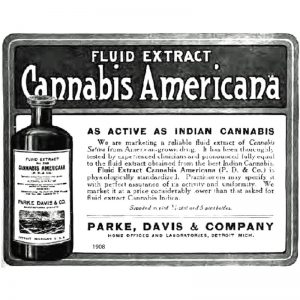
A Parke-Davis cannabis extract advertisement
When the prohibition was enacted, a number of medical doctors and clinicians objected to the outlawing of cannabis as a viable treatment option for patients they were currently treating.
To discredit this opposition, the government conspired to create an anti-marijuana propaganda campaign that turned public opinion against it. The best-known example of which is the 1936 feature film “Reefer Madness,” which tells a sensationalized story about an upstanding high school student who gets dragged into a murder plot after smoking marijuana cigarettes. The following excerpt from the film’s opening titles summarizes the attitudes expressed in the film:
“Marihuana is that drug — a violent narcotic — an unspeakable scourge — the Real Public Enemy Number One! Its first effect is sudden, violent, uncontrollable laughter, then come dangerous hallucinations — space expands — time slows down, almost stands still … fixed ideas come next, conjuring up monstrous extravagances — followed by emotional disturbances, the total inability to direct thoughts, the loss of all power to resist physical emotions … leading finally to acts of shocking violence … ending often in incurable insanity.”
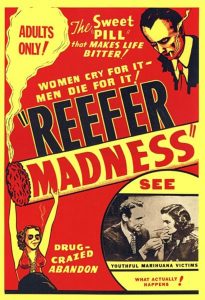 “Reefer Madness” ends with one of the marijuana-smoking gang members being sentenced to life without parole in an asylum after being rendered permanently insane because of his drug use.
“Reefer Madness” ends with one of the marijuana-smoking gang members being sentenced to life without parole in an asylum after being rendered permanently insane because of his drug use.
Given the socially conservative climate of the late 1950s and aware that even his interest in marijuana might have adverse implications on his future career aspirations, Tod decided to conduct his personal cannabis trial while on a road trip to Mexico during the summer of 1959, far away from the reaches of Temple University.
“Obtaining marijuana for my first clinical experiment turned out to be very simple,” he recalled. “I got out of the car and started walking towards the hotel and was accosted by a street entrepreneur who said, ‘You want a girl?’” Instead, Tod asked for marijuana.
Reflecting on his first impressions of the drug, Tod wrote, “I found the experience interesting — fascinating. I had this rush of ideas and images. I can remember looking out the window and wondering what it would be like to fly — not that I felt any compulsion to do so, just musing about the sensation. Of course, I wrote down my impressions.”
After sharing the rest of his stash with two college friends, Tod would not touch marijuana again until 1964, when a friend reintroduced him to it during his residency at Oregon State Hospital.
As Tod began using marijuana recreationally on a regular basis, this renewed his interest in the pharmacological attributes of the plant; throughout his residency, he began compiling a bibliography of medical literature about cannabis.
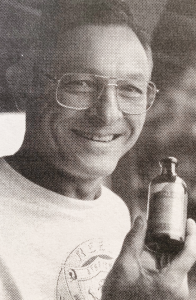
Tod with a Lilly cannabis extract bottle
The content he found was overwhelmingly positive, and combined with his own personal knowledge of the substance, Tod found it difficult to reconcile the harsh legal penalties with what he increasingly knew to be a drug less harmful than alcohol.
After completing his residency in 1966, Tod embarked on a two-continent road trip through Europe and North Africa, where he had the opportunity to follow up a research lead in Morocco after learning about cannabis-suppression efforts that were being made there by the United Nations Narcotics Commission.
Tod traced a map from the U.N. report and plotted his course through the marijuana growing regions in question. He described his trip in an article in “O’Shaughnessy’s Journal of Cannabis in Medical Practice”: “Cannabis was growing everywhere, all along what passed for a road. No utilities, no electrification, no running water. At the time, I was the only European or other-worlder that many of these Moroccans had seen.”
One of the reasons Tod chose to visit Morocco was to investigate a mental hospital in Tangier that claimed to have evidence on the harmful effects of cannabis as was reported in the International Bulletin of Narcotics.
After meeting with the hospital superintendent and touring the facility, he realized that it lacked the research capabilities to deliver such results.
“They didn’t have any psychiatrists in the whole of Morocco. I had to keep explaining that I was a doctor of the head because the word ‘psychiatrist’ meant nothing to them. They didn’t even have a rudimentary laboratory. It was like a prison camp without much security. It convinced me that what was put out in the International Bulletin of Narcotics was a bunch of crap.”
This realization that much of the allegedly negative research on the use of cannabis had been fabricated for political reasons would fuel Tod’s further interest in the study of marijuana’s medicinal properties.
Upon his return to the States, Tod took a job at the New Jersey Neuropsychiatric Institute, where he was able to work with scientific leaders in the study of psychedelic drugs as a potential treatment for mental disorders.
Tod recalled in an interview excerpt from the “Dr. Tod” documentary, “The reason I wanted to be there was because of Dr. Humphry Osmond, who was one of the directors of the institute. Dr. Osmond administered the (hallucinogenic drug) mescaline to Aldous Huxley, which motivated him to write ‘The Doors of Perception.’ I didn’t find out until about 20 years later, but I discovered to my amazement that Dr. Osmond was a contractor to the CIA — to the intelligence community. So, he was protected, and I was protected. Not realizing at the time, how close to the flame I was flitting around and how this other world of drugs was in motion.”
Tod’s research interests were able to flourish with the support of scientific leadership who supported his line of inquiry on the medical benefits of cannabis and its potential as a harm-reduction substitute within addiction treatment counseling.
Unfortunately, when the head nurse chose to alert the police department after a patient under Tod’s care suffered a relapse into heroin use, Mikuriya sought employment elsewhere. Shortly thereafter, in 1967, he was offered a prestigious job as director of nonclassified marijuana research at the National Institute of Mental Health Center for Narcotics and Drug Abuse in Washington, D.C.
From his vantage within a federal agency position, Tod was able to leverage government resources to continue his research. His studies uncovered extensive documentation of the preprohibition use of medical cannabis to treat a variety of conditions. One of the most comprehensive studies conducted was “The Indian Hemp Drugs Commission Report of 1893-94.”
He wrote, “It continues to remain largely unnoticed, although it is the most-thorough expensive ethnographic study of the use of marijuana in India at the height of British hegemony where this question was raised in the House of Commons about the lunatic asylums overflowing because of problems with cannabis. As a result, the Indian Hemp Commission was established, and this unlikely report generated and sent back to the British government to be filed and forgotten. Some expensive and very comprehensive studies show [cannabis] was an integral part of the Ayurvedic medicine that continues to be useful in treatment of a number of medical conditions.”
Another key discovery made during Tod’s time at NIMH were the writings of William O’Shaughnessy. “I discovered at the National Library of Medicine the works of Sir William Brooke O’Shaughnessy. Born in 1806, died in 1889. Brought cannabis to Western medicine in a model of exemplary scientific methodology. With review of literature, animal experiments, healthy human experiments and therapeutic trials with patients who had a number of medical conditions.”
O’Shaughnessy’s writings were so influential on Tod’s future work that he would later co-found a medical journal in his name with marijuana activist Fred Gardner.
Through correspondence with the archivist of the Eli Lilly pharmaceutical company, Tod found perhaps the closest thing to a smoking gun in terms of the prolific use of medical cannabis in American pharmacology prior to prohibition.
Referencing information that was given to him on the Lilly corporation’s past usage of medical cannabis, Tod wrote, “They had a whole protocol of biologically analyzing the potency with the use of certain species of dogs. Specimens were probably kept by the food and drug administration, but I’ve not been able to confirm this. The only thing I know is that once upon a time they had federal standards for potency. But all records of that have disappeared, and I learned as part of my experience with the Feds that there is a cycle where every 10 years or so, they go through and purge the files.”
Tod would also learn that despite the 1937 prohibition of marijuana use among the public, medical cannabis was only removed from the U.S. pharmacopeia in 1940.
“At this point in time, we are blocked from the knowledge of exactly how cannabis was taken off the formulary in 1940,” Tod recalled. “As a result, all sorts of bad information has piled up after cannabis was criminalized, taken over more and more by the criminal justice entities, which substituted incorrect dumbed-down information for medical intelligence.”
Despite the evidence that the federal government had at one time embraced an objective approach to studying the effects of cannabis, by 1967, NIMH was mainly funding projects with clear scientific bias.
Tod recalled, “They were funding searches for harmful effects and detection methods, and some mechanism of action studies. No interest in beneficial effects.”
Projects that were funded during Tod’s time with the agency, such as “Psychosocial Networks of Young, Dangerous Drug Users” and “Identity and Information Control in Social Deviants,” made little effort to hide the researchers’ disdain for their subjects. Tod expanded on the social and political environment in which he was frequently at odds.
“Back in 1967, this was in the court of Lyndon B. Johnson, but things were not well. This was the height of the Vietnam War protests, we had just had the 1966 Summer of Love going on in San Francisco. Communes were springing up all over the place in California, and you can imagine the stimulated fantasies of the repressed departmentalized employees in the federal system,” Tod recalled. “They were clueless — all they knew was what they were reading in Life magazine or seeing on TV. One of my assignments was to go and spy on hippies and give them information on what kinds of influences marijuana was having in this subculture that was perceived as a clear and imminent threat to national security because of their anti-war proclivities. I had been a cannabis user since 1964 and had direct knowledge of the effects of the drug, so it was natural that I would go out and visit the people in California and, in reality, recognize that I was really one of them, not the people I was working with.”
Tod continued, “I discovered that my mission was to find out anything that was wrong with it, so that we could develop a propaganda campaign.”
At the conclusion of his California assignment, Tod wrote a report titled “Position Paper on Marihuana” that advocated for a major policy shift by regulating marijuana under the Food and Drug Administration instead of through law enforcement.
His position urged the federal government to recognize the dissimilarity between addictive agents and marijuana.
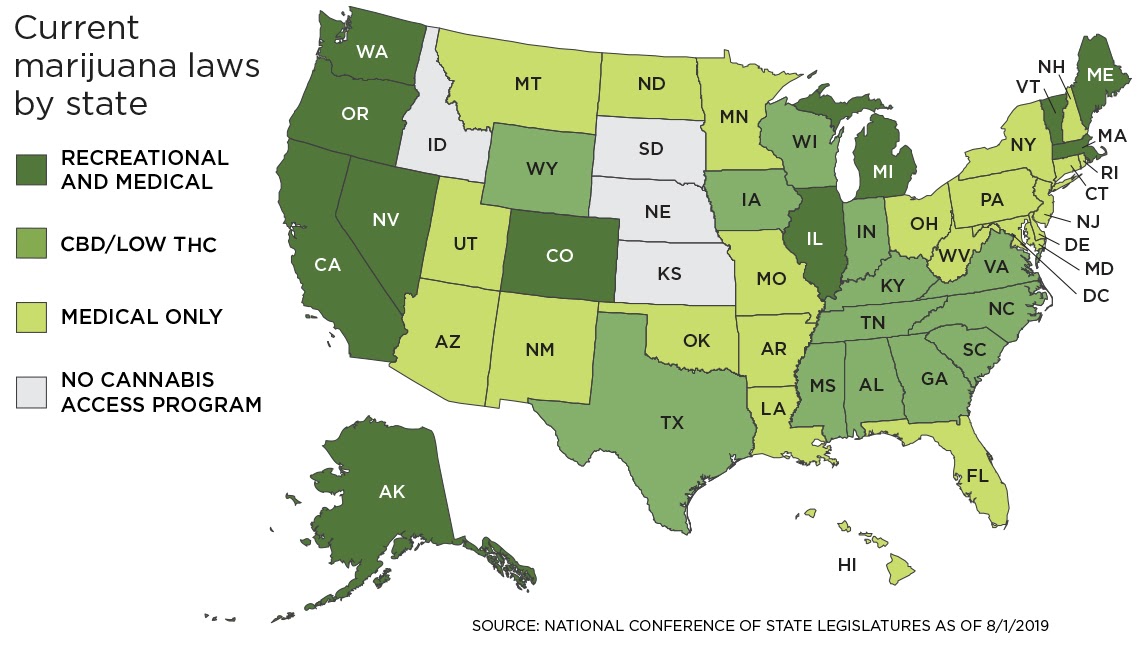
Cannabis: Where Is It Legal, courtesy of AARP
An excerpt from his report reads: “Classification of marijuana use as a psychosocial rather than a criminal problem will facilitate a more rational and scientific approach to understanding, education and control. Critical research, particularly reliable epidemiologic studies, would become possible if there were no legal sanctions against self-identification of users.”
Unfortunately, Tod’s bosses had little interest in his findings and did not share the report widely.
“It’s very much like the scenario in ‘Planet of the Apes,’” Tod recalled. “I just happened to be rooting around in the cave and located all these artifacts. But as with in the ‘Planet of the Apes,’ bringing back these artifacts and showing the contemporary reigning monkeys was fraught with danger. Rejected, and nobody really wanted to talk about that, and the special interest groups within the criminal justice system and their fellow travelers continued to move along.”
Shortly after submitting his report, Tod was forced to resign when a colleague informed on him for bringing back marijuana from California to share with some of the other researchers.
After a short stint in Boston serving as chief medical consultant on a marijuana legalization test case, Tod relocated to California in 1970, where he would spend the next 21 years as an attending psychiatrist at Everett A. Gladman Memorial Hospital in Oakland.
In his spare time, Tod would become one of the foremost advocates in the medical marijuana movement — lobbying on behalf of and helping to write the California legislation upon which all medical marijuana laws are based.
This article will continue in the next issue of the Pacific Citizen with a detailed description of Dr. Tod Mikuriya’s legislative advocacy as it relates to the medical marijuana movement in California and the persecution he faced as a patient advocate in his later life.




